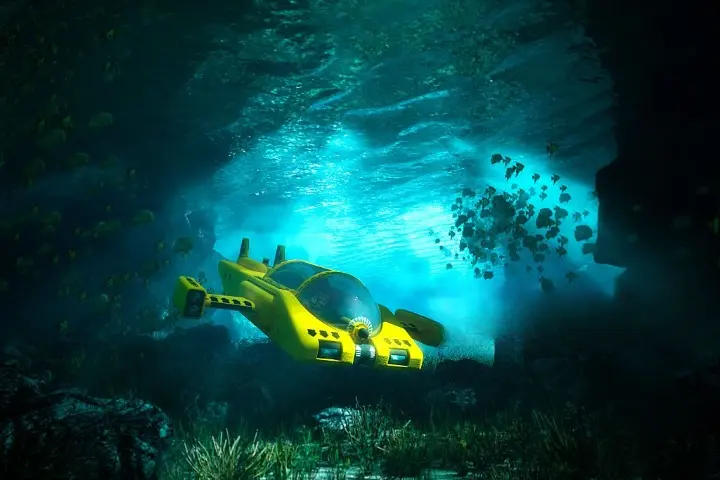
Can We Make Underwater Cars? Exploring the Possibilities and Challenges
The idea of underwater cars has fascinated people for decades. Imagine driving through the ocean depths as easily as you would on a road, exploring underwater landscapes, and uncovering the secrets of the deep sea. But how close are we to making this vision a reality? This article dives into the technological, engineering, and environmental challenges of building underwater cars, the potential benefits, and the advances that could make this dream come true.
What Are Underwater Cars?
An underwater car is a vehicle that can operate both on land and under the sea. Unlike submarines, which are designed solely for underwater navigation, an underwater car would need to smoothly transition between land and water while maintaining safety and comfort. We have seen amphibious vehicles like the Gibbs Aquada, which can drive on land and move on water surfaces, but diving underwater brings new challenges.
The Big Challenges
- Handling Water Pressure:
- The Problem: The deeper you go underwater, the greater the pressure. Even a few meters underwater can put a lot of stress on a vehicle’s structure. While submarines are built to handle this with thick, reinforced hulls, an underwater car would need to be both strong enough to withstand the pressure and light enough to move easily on land.
- The Solution: We need materials that are both lightweight and capable of handling high pressure. Advanced materials like carbon fiber or titanium alloys might be the answer. The design would also need to distribute the pressure evenly across the vehicle.
- Managing Buoyancy:
- The Problem: To drive underwater, a vehicle must achieve neutral buoyancy—meaning it shouldn’t sink or float. Most cars are naturally buoyant, so they would float when placed in water. Achieving the right balance between weight and buoyancy requires precise calculations and smart engineering.
- The Solution: Adding adjustable ballast systems, similar to those used in submarines, could help control buoyancy. A hybrid propulsion system with retractable wheels and underwater thrusters could also improve maneuverability.
- Propulsion and Navigation:
- The Problem: Traditional car engines aren’t designed to work underwater. We need a completely different propulsion system to navigate underwater while still being able to drive on land.
- The Solution: Electric propulsion systems, like those used in submarines and underwater drones, could work. Electric engines don’t require air intake and exhaust systems, making them suitable for underwater use. Coupled with advanced navigation systems like sonar and GPS, this could allow precise control both on land and underwater.
- Keeping the Water Out:
- The Problem: Water getting inside the vehicle would be disastrous, damaging electronics, compromising safety, and affecting buoyancy.
- The Solution: The car would need to have a strong sealing mechanism using waterproof materials and multiple layers of seals. This would ensure doors, windows, and other openings remain watertight even under high pressure. The technologies used in deep-sea exploration vehicles could offer some inspiration here.
- Ensuring Safety:
- The Problem: An underwater car needs to protect passengers from the unique dangers of being underwater, like cold temperatures, lack of breathable air, and emergencies.
- The Solution: A life support system with oxygen supply, temperature control, and emergency protocols is essential. The car could also be equipped with escape pods or flotation devices for safety in case of an emergency.
Environmental and Regulatory Concerns
- Impact on Marine Life:
- Introducing underwater cars could disrupt marine ecosystems. The noise and vibrations, as well as potential pollution from leaks, could harm aquatic life.
- Regulations would need to control these impacts, possibly requiring zero-emission propulsion systems and non-degradable materials that don’t release harmful substances.
- Legal Challenges:
- Most vehicle regulations are for land or air, so new laws would need to be developed for underwater cars, considering national and international waters.
- Training, licensing, and operational guidelines would also be necessary to ensure safe underwater driving.
The Benefits of Underwater Cars
- Exploration and Research:
- Underwater cars could open up new possibilities for marine research, allowing scientists to explore previously inaccessible areas. This could lead to breakthroughs in understanding oceanography, marine biology, and underwater archaeology.
- Recreational Use and Tourism:
- For adventure seekers and tourists, underwater cars could offer a novel way to experience marine environments, increasing awareness and appreciation of marine ecosystems and boosting eco-tourism.
- Search and Rescue:
- Underwater cars could improve search and rescue operations in coastal areas or underwater incidents, providing rapid access to submerged sites that traditional boats or submarines can’t reach.
- Military and Defense:
- These vehicles could be used for covert operations, surveillance, and amphibious missions, providing new tactical advantages in various military scenarios.
Where We Stand Today
While fully functional underwater cars are still a concept, some prototypes exist with limited capabilities. For example, the Rinspeed sQuba can drive underwater using electric-powered propellers, but it only works at shallow depths and requires an open cockpit with scuba gear for the driver and passengers.
Advances in materials, battery technology, and marine engineering are bringing us closer to making underwater cars a reality. As interest in sustainable transportation grows, the development of these vehicles could speed up—if we can overcome the significant technical, environmental, and regulatory challenges.
Conclusion
Making underwater cars isn’t impossible, but it presents unique challenges across multiple fields, including engineering, technology, environmental science, and law. While we’re still far from seeing them in everyday use, continued research and innovation could make them a reality. As technology advances and we learn more about underwater environments, one day, driving beneath the waves might become as common as driving on the highway. For now, the underwater car remains a captivating vision of what could be possible at the intersection of land and sea.READ MORE BLOGS

